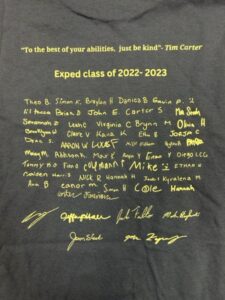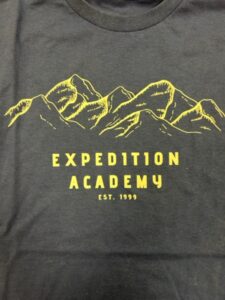What truly defines a “family”? Often times you will hear people say it has nothing to do with blood, or that a family – like a home – is where you’re happy, where your heart lies. Dictionary definitions typically involve blood relations, although more expansive definitions make room for people with a shared community, whether it’s in a college dorm, a senior residence, or a sports team.
When I look at my family – the dictionary version – I feel blessed that I have an incredible wife and three amazing sons. When I look at my “cultural” family – the people that reside in my heart in terms of like minds and like visions – I find that many of the people of Peoples Temple are there. And when these paths cross, the definition of family becomes what it really should be – where you are happy and where your heart lies. Like a tree, the branches go many directions and have many roots and connections.

There were many families in Jonestown, families as defined by the dictionary. A listing of the family trees on this site demonstrates that. But there were also people who went to the jungle with other people not related to them, all looking for hope, all looking for a better place, all willing to share those aspirations. This “family” is what I consider the “cultural” definition of family, one that unifies through heart and vision. Peoples Temple, the blood families and the cultural families alike found themselves together and unified with a common goal through heart and through vision. The caring and the longing that brought them all together into a single family unit known as Jonestown was strong and rich – only to be taken down on November 18th with the rain storm and the evil side of Jim Jones.
But as with any solid tree – including any solid family tree – there are roots that are strong and seeds that are sown. There were survivors from the tragic day, and there were memories and spirit that went with the survivors. As a powerful example: Tim Carter lost seven immediate family members and his entire cultural family in Jonestown that day. He had to start over on so many levels, keeping the memories and spirit alive of those he lost, and trying to recreate both definitions of families. He had already been through the Vietnam War and dealt with the issues that troubled veterans after that. When he came back to the United States from Guyana, he faced mockery and ridicule, and even though now living strong today, he is still confronted with the legacy of that day whenever anyone refers to “drinking the Kool-aid.”
So what did Tim have to do in terms of finding his families? He kept moving forward. He has lived a great life, cherishing and loving with all of his heart his blood family he has now, and always remembering the blood family he has lost. He is willing to reach out and share, to help others understand the evils that did lie in Jonestown, but also the wonderful love and family that were there as well.
But I have always wondered: where did he get his strength?
Tim Carter is someone I consider now part of my “cultural family,” someone whom I care about and someone who has dreams and visions similar to mine. We have become really great friends over the years, and he has been so generous to speak to my class every two years when the topic of Peoples Temple comes up. I learn something new from him every time he speaks to my students – this last year was his fourth online appearance – answering their questions, explaining the ins and outs of Peoples Temple, putting it in the context of the time period, and offering the lessons he’s learned. It is one of those lessons I cherish for my teenage students, and I hope one day it will really hit them how special it was to have someone like Tim Carter, a survivor of a huge historical event, answer their questions. This has been an extension of my “cultural family”, and for Tim’s as well. Shared dreams and visions, shared love, and shared lessons. Another aspect of this is my own blood family has been touched by Tim as two of my sons have been a part of these classes, with one more to come next year when we talk with Tim again. My middle son got to hear Tim this last year, and Carter was then able to see why and where he got the name he has. Another crossing of blood and cultural families – all for a common positive cause.

 The last question my students asked Tim this past year was a simple one. The room was enthralled with his words and had already learned so much, but in the end they wanted to know if he had one final piece of advice for them. Tim paused for a second, then answered with something so simple, but so powerful, something so much at the heart of the people of Peoples Temple, the families of Peoples Temple both blood and cultural. These words also reflect so much of Tim and his current family both blood and cultural. These words taught me how he has moved forward and how he has found strength. These words resonated with my students so much that it became the quote used on the backs of their annual t-shirt.
The last question my students asked Tim this past year was a simple one. The room was enthralled with his words and had already learned so much, but in the end they wanted to know if he had one final piece of advice for them. Tim paused for a second, then answered with something so simple, but so powerful, something so much at the heart of the people of Peoples Temple, the families of Peoples Temple both blood and cultural. These words also reflect so much of Tim and his current family both blood and cultural. These words taught me how he has moved forward and how he has found strength. These words resonated with my students so much that it became the quote used on the backs of their annual t-shirt.
Those words were these: “To everyone and everything… just be kind.”
If only other families around the world, both blood and cultural could hear and follow those words, with Tim’s life as an example, we can overcome anything.
(Craig Foreman is a Sociology and History Teacher with the Expedition Academy at Theodore Roosevelt High School in Kent, Ohio. The school’s website is www.expeditionacademy.com. His previous stories for this site may be found here. He may be reached at Ke_cforeman@kentschools.net.)